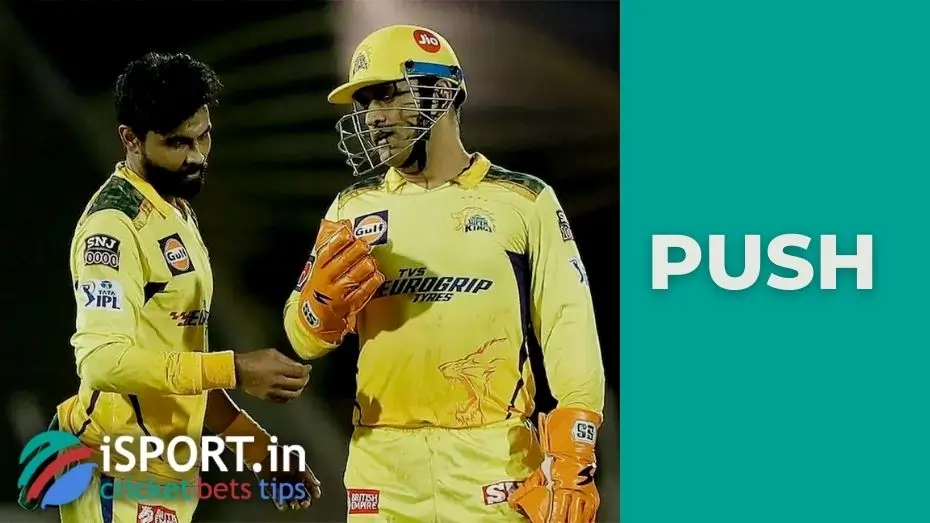Push

The term push has several meanings in cricket. In the first case, it refers to the action by which a batsman invites his partner to earn runs. In the second case, the batsman hits the ball, and in the third, the bowler serves.
Push in cricket like a batsman signal
Cricket points are called runs, and this is by no means accidental. During an innings, the teams take turns taking on the roles of the server and the batter, with the bowler and fielders on the pitch from the server and two batsmen from the batter. They stand at opposite ends of the pitch. The task of one of them, the striker, is to defend the wicket and earn runs. The task of the other, who is called a non-striker, is only to earn runs.
After the striker has parried the bowler’s serve and can defend his wicket, he and the second batsman can get injured. Injuries are awarded for every run: a situation where two batsmen cross the pitch and change places.
Of course, this comes with certain risks. The main risk is that the batsman can be knocked out while he is jogging. But besides, batsmen need to keep in mind when running whether they are going to rotate or not. Indeed, the striker and non-striker change places as a result of the run, and this makes sense only if they are equally strong. Otherwise, a weak player will be on defense. A couple of batsmen can earn unlimited runs in one serve, and the main thing is strategy and consistency. It is not for nothing that there is not only a rating of the most productive batsmen in all cricket formats but also a rating of the best partnerships.
Batsmen need to have mutual understanding and a system of signs that they can exchange to adjust their running strategy. This is exactly what push is used for – it is one of the types of signals. There are several of them:
- Push – in this case, the batsman proposes a run, urging his partner to look for two. Unlike signal two, in this case, the players are not sure if they will get two runs.
- No – This signal indicates that the batsman who pitched it is asking not to run.
- Yes – the batsman asks for one run.
- Two – the batsman asks for two runs.
- Three – the batsman asks for three runs.
- Wait – the batsman postpones the decision for a few seconds. Usually, this signal is given if it is not clear how quickly the outfield players will be able to get the ball back into play. Once this signal is given, one of the several previously mentioned must follow, which will give the second batsman the direction to act: stand still or run.
Of course, there are other signals in a couple of batsmen, especially successful ones, who managed to play with each other, but these are included in the standard arsenal of all players.
Push as the interaction of a bowler and batsman with a ball
Often this term refers to a quick throw of a ball. Usually, this is what they say about a spinner.
The term push is also used when talking about the batsman hitting the ball. It is one of the defensive techniques when the batsman’s goal is not to earn runs but to protect the wicket.
